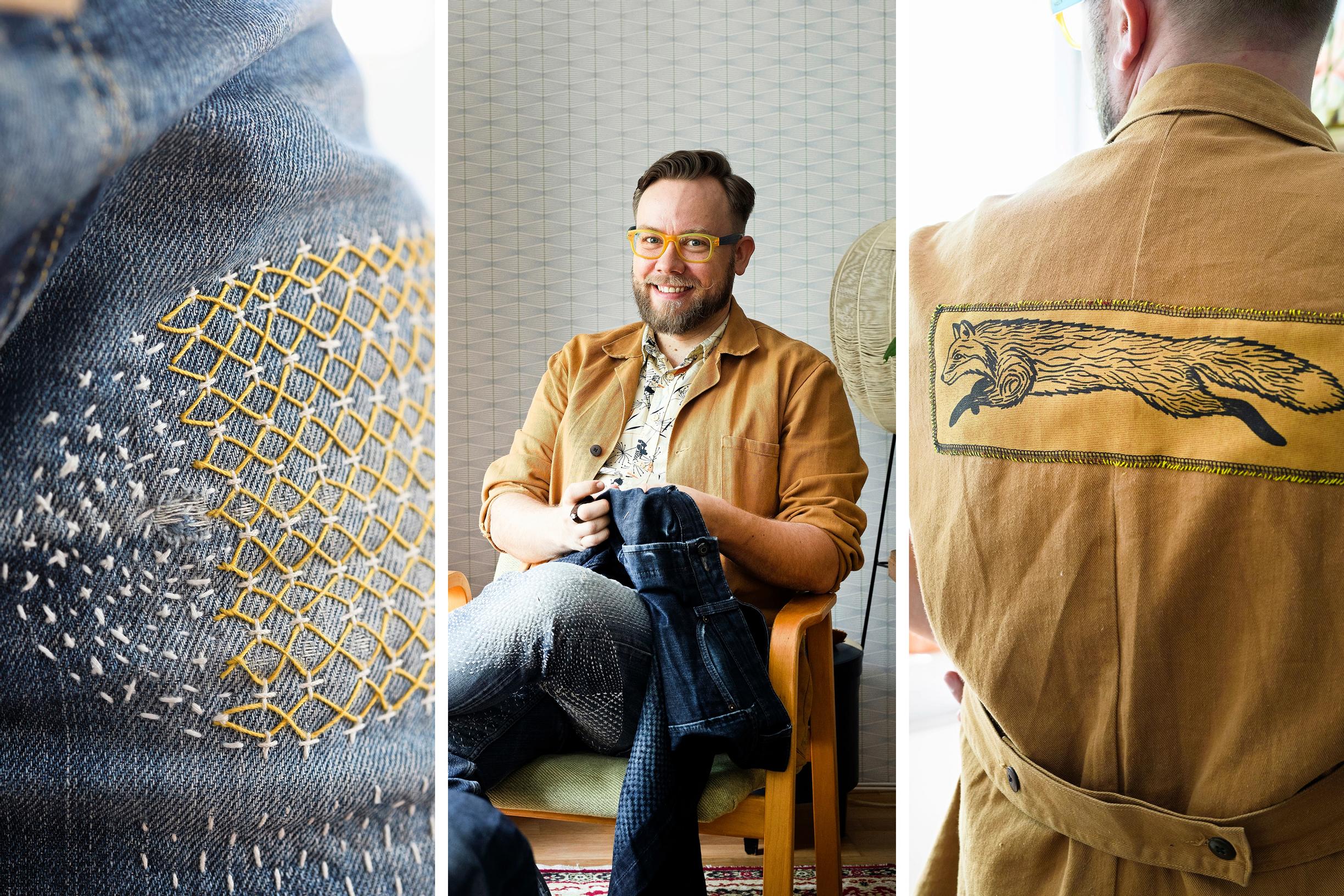
How Niko Lindgren revives his worn clothes: “A mended garment becomes more personal”
Mending clothes is a luxury, says 38-year-old Niko Lindgren: “You can only do it if you have enough time.”

I have a couple of pairs of jeans that I’ve been wearing for over ten years, and they’ve accumulated quite a few visible repairs. Once, I was just about to leave home and pulled on my pants when the entire leg ripped off at the edge of a previous repair, just above the knee. They were only held together at the back by a few stitches. At that point, I had to admit that perhaps these pants weren’t the best choice for the day.



I have consciously decided to cut back on buying new clothes and to extend the lifespan of the ones I have. And since I don’t particularly fancy walking around in torn clothes, the only option is to repair the old ones.
In the best-case scenario, you would mend a broken garment the moment it breaks. That’s not always possible. I, myself, have a large reusable bag at home full of torn clothes waiting for the right moment.
For this reason, I think repair events are a good idea. I am actively involved in the Korjauskaupunki (“Repair City”) community, which meets in Helsinki once a month to mend clothes together. In these meetings, I teach and advise others the best I can. I also bring along my own postponed projects, sit down, and dedicate time for my clothes.


When I was little, my mother sewed costumes for me and my siblings. In elementary school, I tried textile crafts and made roleplay clothes and costumes at home. Back then, I was interested in theater and role-playing games.
I became interested in mending clothes as a teenager. I was already critical of consumerism and mostly bought clothes from flea markets. Flared trousers were in fashion back then too, and my favorite jeans had worn out at the hems that dragged on the ground. I patched them with red fabric. I thought that repairs should show. Maybe I was influenced by my friends who were punks and sewed patches onto their clothes.
“At first, I got the impression that sashiko was terribly difficult. Then I read in a blog that it doesn’t have to be so precise.”
As a teenager, I mended clothes a bit, then it went on hiatus. At some point, I took my torn clothes to be repaired by others. About five years ago, I came across Japanese sashiko embroidery and got invested.
At first, because of the precise embroidery instructions and impressive geometric patterns, I got the impression that sashiko was terribly difficult. Then I read in a blog that it doesn’t have to be so precise, that you learn the technique through doing it. There was a punk-like attitude in that. I decided that I just have to start now.


In the past, mending clothes was the norm. It wasn’t until the 1980s or 90s that consumer culture, where it’s cheaper to buy new clothes than to repair old ones, reached Finland as well. Such a situation shouldn’t exist when you consider the amount of work required to collect raw materials, spin yarn, weave fabric, and finally design, cut, and sew the garment. It doesn’t make sense to start the process from scratch when a piece of clothing breaks.
Of course there are clothes that aren’t worth mending. Nowadays, cotton is mass-produced, and its quality is poor. On the other hand, materials like elastane degrade over time. Still, I believe that the lifespan of many clothes can be extended.
“When a garment reaches the end of its life, I can still use the fabric to patch other clothes.”
If I buy a new T-shirt, it’s first for summer use. When the shirt wears out, it moves to winter use, for example under a denim shirt. Then, when the shirt is so worn that I don’t want to show it to others, it becomes a nightshirt and finally a renovation garment. I also repair furniture, and I need clothes I can wipe glue on without worry.
When a garment reaches the end of its life, I can still use the fabric to patch other clothes. For example, I’ve kept the legs from jeans that were cut into shorts, which I can use for patching.


Mending is ecological, but it still arouses surprisingly strong emotions. There’s shame associated with it and images of poverty. That’s ironic, because mending is actually a luxury. You can only do it if you have enough time.
By mending clothes, you can add something new to them, and the more patches accumulate, the more the garment becomes your own. This idea delighted me already when I repaired my favorite pants as a teenager. Everyone has jeans, but who else would have ones with red legs?


